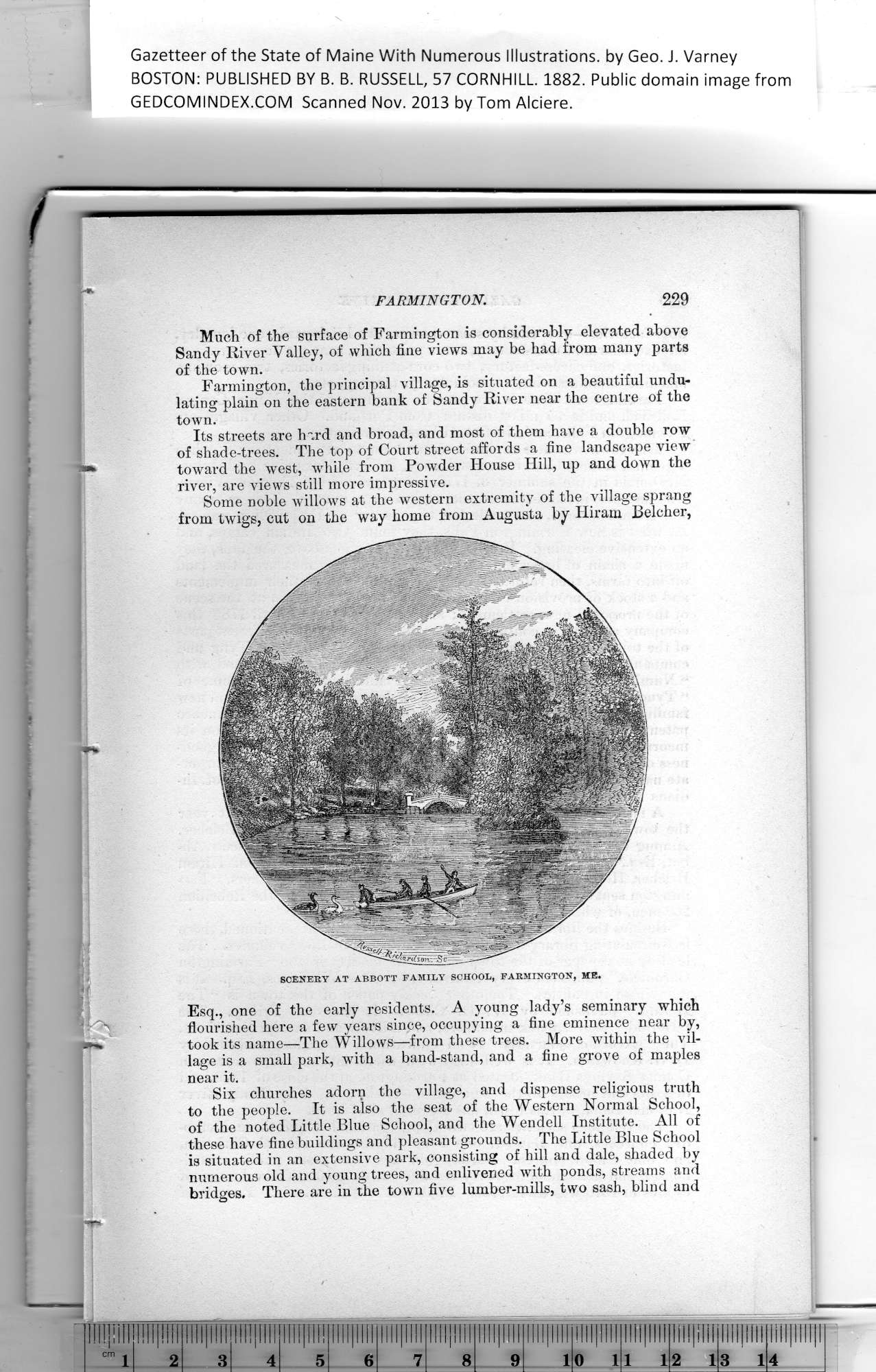Click on the image to view a larger, bitmap (.bmp) image suitable for printing. HOME PAGE ... REFERENCE PAGE ... THIS GAZETTEER’S PAGE |

Click on the image above for a larger, bitmap image suitable for printing.
|
Gazetteer of the State of Maine With Numerous Illustrations, by Geo. J. Varney BOSTON: PUBLISHED BY B. B. RUSSELL, 57 CORNHILL. 1882. Public domain image from FARMINGTON. 229 Much of the surface of Farmington is considerably elevated above Farmington, the principal village, is situated on a beautiful undu- Its streets are h~rd and broad, and most of them have a double row Some noble willows at the western extremity of tbe village sprang Esq., one of the early residents. A young lady’s seminary which Six churches adorn the village, and dispense religious truth PREVIOUS PAGE ... NEXT PAGE This page was written in HTML using a program written in Python 3.2 |